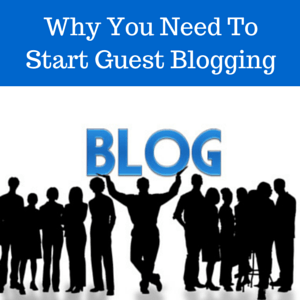
If you want people to stay on your blog for a longer period of time, you need to work on reducing your blog’s bounce rate. Bounce rate is how likely someone is to leave your blog after viewing only one part of your blog (home page, a blog post, etc) without viewing anything else. When those visits occur, your blog’s bounce rate will go up which is not good.
Bounce rate is a big factor towards the number of views I get on my blog. Right now, my bounce rate is close to 50% which is close to the Huffington Post’s bounce rate. I normally get twice as many views as I get visitors just because most of my visitors decide to stick around after reading one of my blog posts.
When someone sticks around, they get to learn more about you. That person gets to read more of your blog posts, and if that person like your writing, that person will become curious. That person decides to look at your bio, find your social networks, and take a look at your products.
Bounce rate is critical towards getting to know the people who visit your blog. Once you get someone on your blog, you need to keep that person on your blog for as long as possible. Having a low bounce rate will make sure people stay on your blog longer. Here are 6 ways to lower your blog’s bounce rate.
- Include links to your older blog posts in your newer blog posts. When you do this, make sure the older blog posts are related to the newer blog posts. A link to an older blog post about Twitter would not work well here, but a link to an older blog post about SEO would work well here. Bounce rate and SEO have something in common, and if you can connect the two together, have a link of the older blog post in your newer blog post. All you need to do is get people to click on the link to your older blog post in order to reduce your blog’s bounce rate.
- Have a big Contact Me button at the sidebar of your blog. If one of your visitors has a question, they will see that button and click on it. Not only does this allow you to interact with more of your visitors, but when the visitor clicks on your Contact Me button, that reduces your blog’s bounce rate.
- Use the Top Blog Posts Widget. The Top Blog Posts Widget will allow you to show your visitors your most popular blog post. When people think of popular blog posts, they think of the best blog posts on your blog. When they click on one of your top blog posts, they will stay on your blog for a longer period of time.
- Write two blog posts that complement each other. Then, schedule those blog posts weeks apart. For my blog post, 6 Advanced Twitter Tips, one of the tips was embedding tweets on your blog. I wrote both of these blog posts at the same time, but I scheduled them over week apart. That gave my blog post about embedding tweets enough time to go to Page 2 of my blog when my 6 Advanced Twitter Tips blog post got published.
- Break big blog posts into parts. I wrote a blog post about 5 Mistakes People Make On Pinterest. Then, I wrote a Part 2 for that blog post. People who visited the Part 2 decided to visit Part 1 of my blog post as well. Include links to all of your parts so your visitors can easily access them.
- Write content that people love. In order to keep someone on your blog, you need to write content that entices people to stay on your blog. When you write quality content, and your visitors see the link to another blog post, they will click on the link and read blog post after blog post.
Keeping visitors on your blog longer is essential towards getting them to know more about you. In order to increase the amount of time a visitor spends on your blog, you need to pay close attention to your blog’s bounce rate. The next time you create a blog post, create a blog post that is designed to reduce bounce rate by utilizing these 6 tactics.



